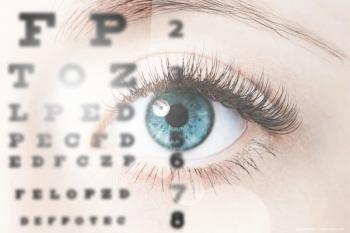
Apodized diffractive IOL gives high visual satisfaction
Washington, DC—Cataract surgery patients who received the AcrySof apodized diffractive IOL (ReSTOR, Alcon Laboratories) experienced a significantly higher degree of satisfaction with their vision compared with recipients of an acrylic foldable monofocal IOL, reported Robert J. Cionni, MD, at the annual meeting of the American Society of Cataract and Refractive Surgery.
He presented results from a quality-of-life (QOL) survey administered to participants in the FDA ReSTOR IOL clinical trial collected from patients with the multi-piece AcrySof ReSTOR MA60D3 and the single-piece AcrySof ReSTOR SA60D3 (n = 438) compared with the three-piece monofocal AcrySof MA60BM (n = 193) implanted. The QOL questionnaire was completed at three time points: preoperatively, 30 to 60 days after the first eye surgery, and 120 to 180 days after bilateral implantation.
The results showed the ReSTOR IOL was associated with better QOL as measured by significantly higher rates of vision satisfaction, less trouble with vision during the day and night, and less social limitations.
The study investigated QOL using a previously validated survey (modified Cataract TyPE specification). Preoperative data for the various questions showed no significant differences between IOL groups. Nearly all patients completed the survey at 30 to 60 days after the first eye surgery and the response rate in both groups after bilateral implantation was about 80%.
Satisfaction ratings were made on a scale of 0 (not at all satisfied) to 4 (completely satisfied). Preoperatively, overall satisfaction without glasses, nighttime satisfaction without glasses, and daytime satisfaction without glasses were low, with mean scores for those items in both groups ranging from 0.6 to 0.8.
The mean satisfaction values for all conditions rose consistently and similarly in both groups after the first eye surgery to between 2.4 and 2.7. When the surveys were completed at 120 to 180 days after bilateral surgery, patient satisfaction increased further in each of the categories in both IOL groups, but the changes observed were consistently greater in the ReSTOR group and the differences in mean satisfaction scores were consistently significantly different favoring the ReSTOR versus monofocal AcrySof IOL.
After bilateral implantation, mean satisfaction scores for the ReSTOR and monofocal AcrySof groups, respectively, were 3.5 versus 3 for overall satisfaction (p≤ 0.0029), 3.3 versus 2.9 for nighttime satisfaction (p≤ 0.0349), and 3.5 versus 3 (p ≤ 0.0051) for daytime satisfaction.
The survey also explored trouble with glare without glasses. Again, using a 5-point rating scale where 0 = no trouble and 4 = overwhelming trouble, the preoperative scores indicated patients in both groups were experiencing a moderate amount of difficulty (mean 2.9 for both IOL groups). When the surveys were completed after bilateral implantation, both groups had a significant (p < 0.0001) reduction from baseline in trouble with glare without glasses, and the mean scores in the ReSTOR and monofocal AcrySof groups were not significantly different from each other (0.9 versus 0.8, respectively).
When asked to rate daytime trouble with vision while performing a variety of daily living tasks using the same 5-point scale, the patient responses indicated minimal trouble either before or after bilateral implantation, regardless of IOL implanted. However, the ReSTOR patients experienced significantly less daytime trouble with vision than the controls (p< 0.005). This was thought to be due to better reading vision without glasses for patients in the ReSTOR group, Dr. Cionni said.
Newsletter
Don’t miss out—get Ophthalmology Times updates on the latest clinical advancements and expert interviews, straight to your inbox.















































.png)


